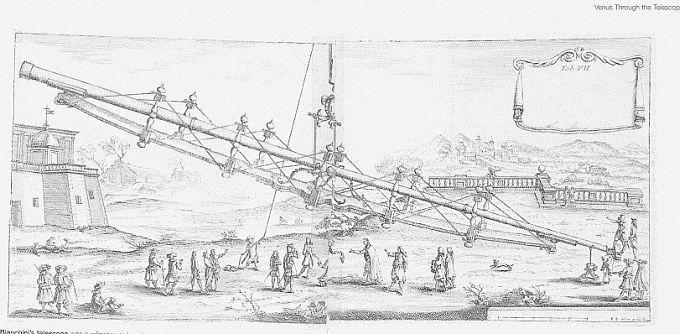CANCELED DUE TO SEVERE WEATHER CONDITIONS!
Thursday, February 9, 2017, 8:00 PM - 10 PM
Amateur Telescope Makers of Boston (ATMoB) Monthly Meeting
Harvard-Smithsonian Center for Astrophysics
60 Garden St.
Cambridge, MA 02138
Topic and Speaker: "Update: New Horizons Mission to Pluto", Kelly Beatty
On July 14, 2015, The New Horizons space probe made a historic flyby of the dwarf planet Pluto. At our November meeting that year, Sky and Telescope Senior Editor Kelly Beatty summed up preliminary results from that mission. Data from New Horizons continued to be received until last October. Kelly is here tonight to summarize what New Horizons has taught us about Pluto.Kelly Beatty, a Sky and Telescope Senior Editor, writes many of the feature articles and news items found in the magazine and on their website. He joined the staff of Sky Publishing in 1974 and served as the editor of Night Sky, a magazine for beginning stargazers, in 2004-07. Specializing in planetary science and space exploration, Kelly conceived and edited The New Solar System, considered a standard reference among planetary scientists. He also taught astronomy for six years at the Dexter Southfield School in Brookline, Massachusetts. He has been an ATMoB member since 2004.Besides being honored twice by the Division for Planetary Sciences (DPS) of the American Astronomical Society, Kelly has also received the Harold Masursky Award for meritorious service, the Astronomical League Award for his contributions to the science of astronomy, and in 2009 the inaugural Jonathan Eberhart Journalism Award and the American Geophysical Union's Cowen Award for Sustained Achievement in Science Journalism.Kelly hails from Madera, California. He holds a Bachelors degree in geology from the California Institute of Technology and a Master's degree in science journalism from Boston University. During the 1980s he was among the first Western journalists to gain firsthand access to the Soviet space program. Asteroid 2925 Beatty was named on the occasion of his marriage in 1983, and in 1986 he was chosen one of the 100 semifinalists for NASA's Journalist in Space program.
Thursday, February 16, 2017, 7:30 PM
CfA Public Observatory Night
Harvard-Smithsonian Center for Astrophysics
60 Garden Street
Cambridge, MA
02138
https://www.cfa.harvard.edu/publicevents
Topic and Speaker: "Gravitational Waves FOUND!", Rainer Weiss (MIT)
A billion years ago, two black holes collided and merged, sending powerful ripples across the fabric of space-time. In 2015 those gravitational waves reached Earth and tickled the detectors of the Laser Interferometer Gravitational-Wave Observatory (LIGO). This first-ever detection of gravitational waves confirmed a long-standing prediction of Einstein's general relativity. It also was the culmination of a decades-long effort. Learn about the technical challenges of LIGO and the significance of this momentous event from one of the field's great pioneers, Rainer Weiss. (Tickets will be required for this event. Free tickets will become available starting on Thursday, Feb. 9th.)
Thursday, March 9, 2017, 8:00 PM - 10 PM
Amateur Telescope Makers of Boston (ATMoB) Monthly Meeting
Harvard-Smithsonian Center for Astrophysics
60 Garden St.
Cambridge, MA 02138
Topic and Speaker: (TBA)
Saturday, March 11, 2017, 6:30 PM and 8:30 PM
Peabody Essex Museum
161 Essex Street
Salem, MA 01970
Two Special Performances
$10 members, $15 students,
$20 nonmembers. Free for children 16 and under
Location: Atrium
The Asia/America New Music
Institute and PEM Composer-in-Residence Matthew Aucoin
invite you on an interstellar adventure about growing
up, facing fear and making art. Using lighting and
projections to lift the Atrium into outer space, this
music experience will delight the whole family. Learn
more at
pem.org/aucoin and
aanmi.org.
Featuring new music by Chad
Cannon, Sun-Young Park, Sayo Kosugi, Paul Frucht, and
Matthew Aucoin. Lighting and projection design by Mary
Ellen Stebbins, Kevan Loney, and Bryce Cutler. Conceived
and directed by Victoria Crutchfield.
Approximate run time: 75
minutes, no intermission.
Family-friendly concert
6:30 pm | Atrium
Purchase Tickets - 6:30pm
Wear your pajamas and get
comfortable. Performance includes milk and cookies.18 and older concert
8:30 pm | Atrium
Thursday, March 16, 2017, 7:30 PM
CfA Public Observatory Night
Harvard-Smithsonian Center for Astrophysics
60 Garden Street
Cambridge, MA
02138
https://www.cfa.harvard.edu/publicevents
Topic and Speaker; "The Glass Universe", Dava Sobel
"The Glass Universe," Dava Sobel's latest masterpiece, tells the story of the women who worked at the Harvard College Observatory from the late 1800s through the mid-1900s. Hired by Edward Pickering because they were meticulous - and cheap labor - these women toiled over hundreds of thousands of glass photographic plates to carefully record the precious data contained therein. In the process, these hidden figures discovered the substance of the stars and the distances to them.






